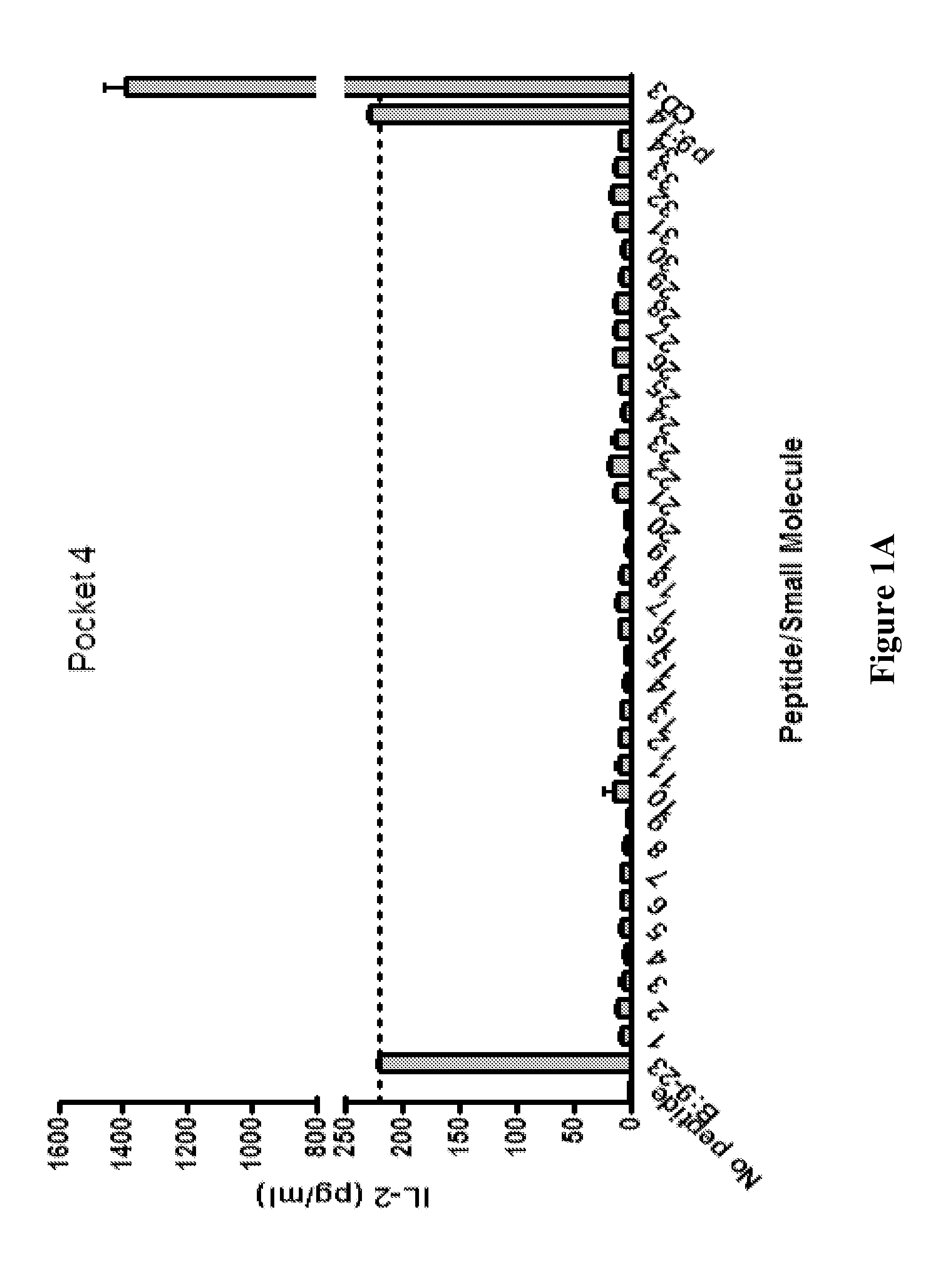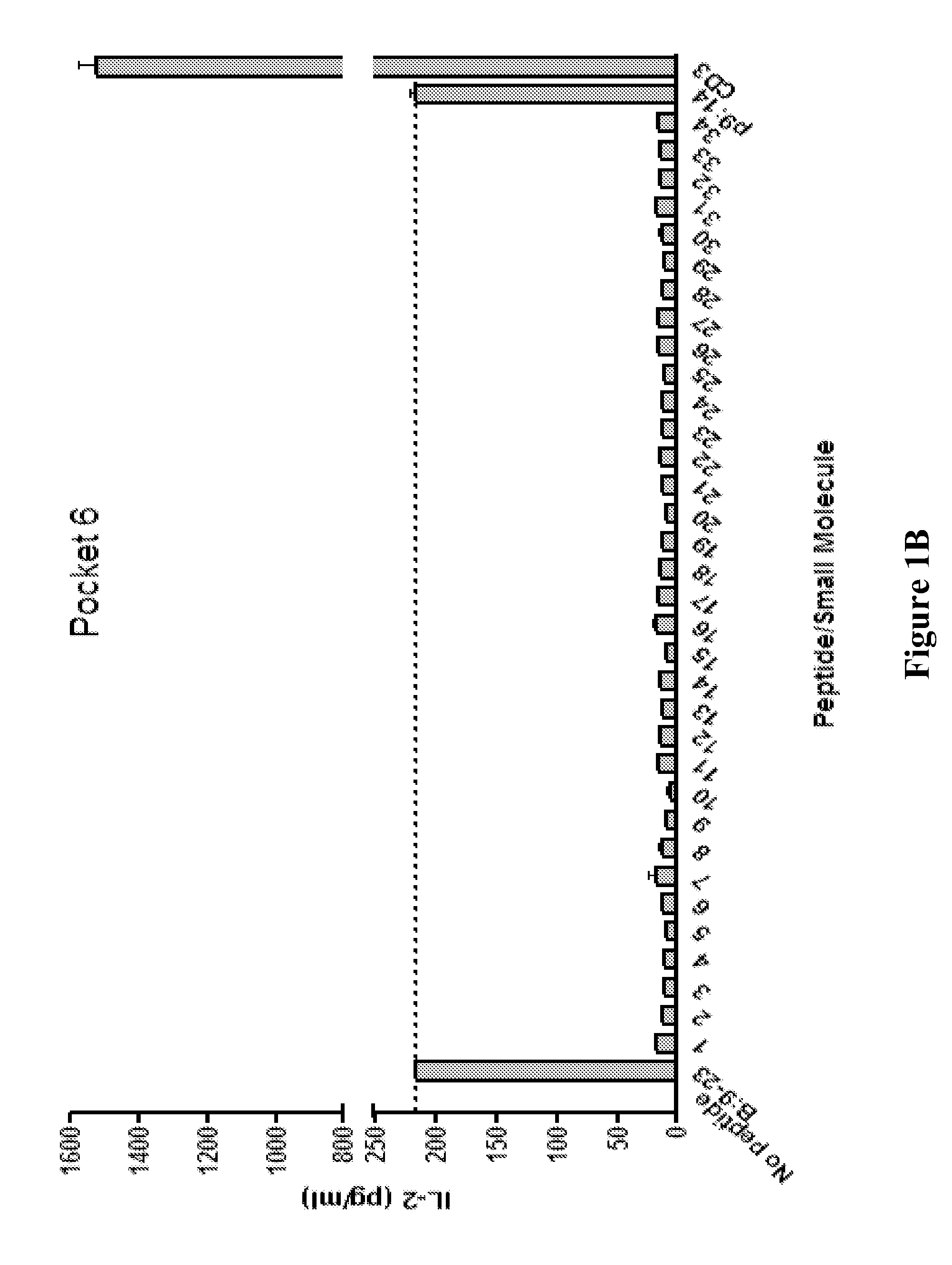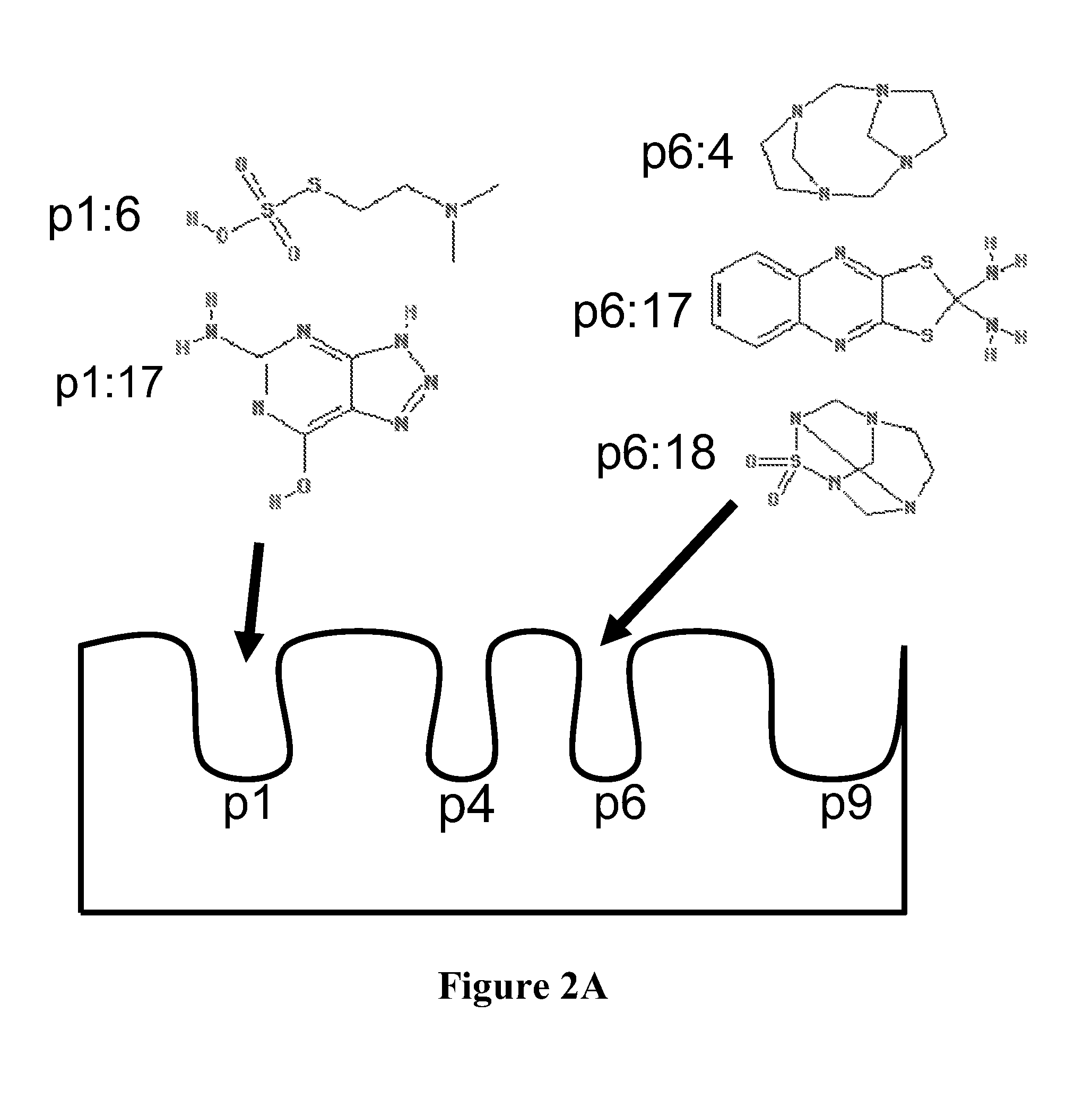Compounds that modulate autoimmunity and methods of using the same
a technology of compound and autoimmunity, applied in the field of therapeutic compounds, can solve the problems of autoimmune diseases that are often chronic, debilitating and life-threatening, treatment often has devastating long-term side effects, and molecule is a poor peptide binder, and is potentially unstabl
- Summary
- Abstract
- Description
- Claims
- Application Information
AI Technical Summary
Benefits of technology
Problems solved by technology
Method used
Image
Examples
example 1
Selection of Small Molecule Drug Candidates Directed at DQ8
[0210]To identify candidate molecules predicted to bind specific structural pockets of the DQ8 antigen binding groove, a supercomputer was used to screen approximately 140,000 small molecules from the NCI / DTP repository of “drug-like” compounds. Existing crystal structures available for modeling include HLA-DQ8 complexed to insulin B:9-23, PDB code 1JK8. The antigen binding clefts of DQ8 and I-Ag7 were superimposed, the sites of critical contacts between peptide and MHC were determined, and the atomic coordinates of B:9-23 peptide from the solved crystal structure were displayed with coordinates for the solved crystal structure. To prepare the site for docking, all water molecules were removed and protonation of the residues was done with SYBYL (Tripos). The molecular surface of the structure was explored using sets of spheres to describe potential binding pockets. The sites selected for molecular docking were defined using ...
example 2
In Vitro Testing of Compounds
[0211]This example describes the screening of small molecules predicted to bind to pockets 4 and 6 of human DQ8.
[0212]A T cell stimulation assay using the clone 5 T cell hybridoma (a DQ8 restricted T cell that responds to the insulin B chain amino acids 9-23) with insulin B:9-23 peptide and small molecules predicted to bind pocket 4 and pocket 6 was conducted. Results (shown in FIGS. 1A (pocket 4) and 1B (pocket 6)) are provided as IL-2 measured in the tissue culture supernatant after overnight culture. Compound p9:14 (pocket 9:compound 14) was used as a control compound that does not change stimulation to the B:9-23 peptide. Compounds were screened at a concentration of 0.104.
[0213]Compounds were tested for their activity in inhibiting the response of multiple anti-B:9-23 TCRs. A T cell stimulation assay was conducted to evaluate the inhibitory activity of the compounds in celiac disease (gluten insensitivity). Using the 489 TCR recognizing gliadin pept...
example 3
Selection of Small Molecule Drug Candidates Directed at I-Ag7
[0215]To identify candidate molecules predicted to bind structural pockets 1 and 6 of the I-Ag7 antigen binding groove, the in silico methodology of Example 1 was used. Table 3 lists NCI identifier the top 40 scoring compounds for each binding pocket.
TABLE 3Top 40 scoring small molecules for binding pockets1 and 6 along the I-Ag7 binding groove.Pocket 1Pocket 6146641638971598917797927127917285534765443610006281703108225177977145425168615756730840123520330567309202406382775506293740202028171096677467907938241116524130818626295304022352617980534455117282614086762151223723358064368222061423010128121811065022037760100731672033801077368280113476634790953773028511106492636925103728170952758151409709019350211252588614252063787743617257811370387659274692111072466775041794586500714243067558557792
[0216]Numbers provided in Table 3 are the NCI identifiers which can be used to identify compound formulas, structures, and molecular weig...
PUM
 Login to View More
Login to View More Abstract
Description
Claims
Application Information
 Login to View More
Login to View More - R&D
- Intellectual Property
- Life Sciences
- Materials
- Tech Scout
- Unparalleled Data Quality
- Higher Quality Content
- 60% Fewer Hallucinations
Browse by: Latest US Patents, China's latest patents, Technical Efficacy Thesaurus, Application Domain, Technology Topic, Popular Technical Reports.
© 2025 PatSnap. All rights reserved.Legal|Privacy policy|Modern Slavery Act Transparency Statement|Sitemap|About US| Contact US: help@patsnap.com



